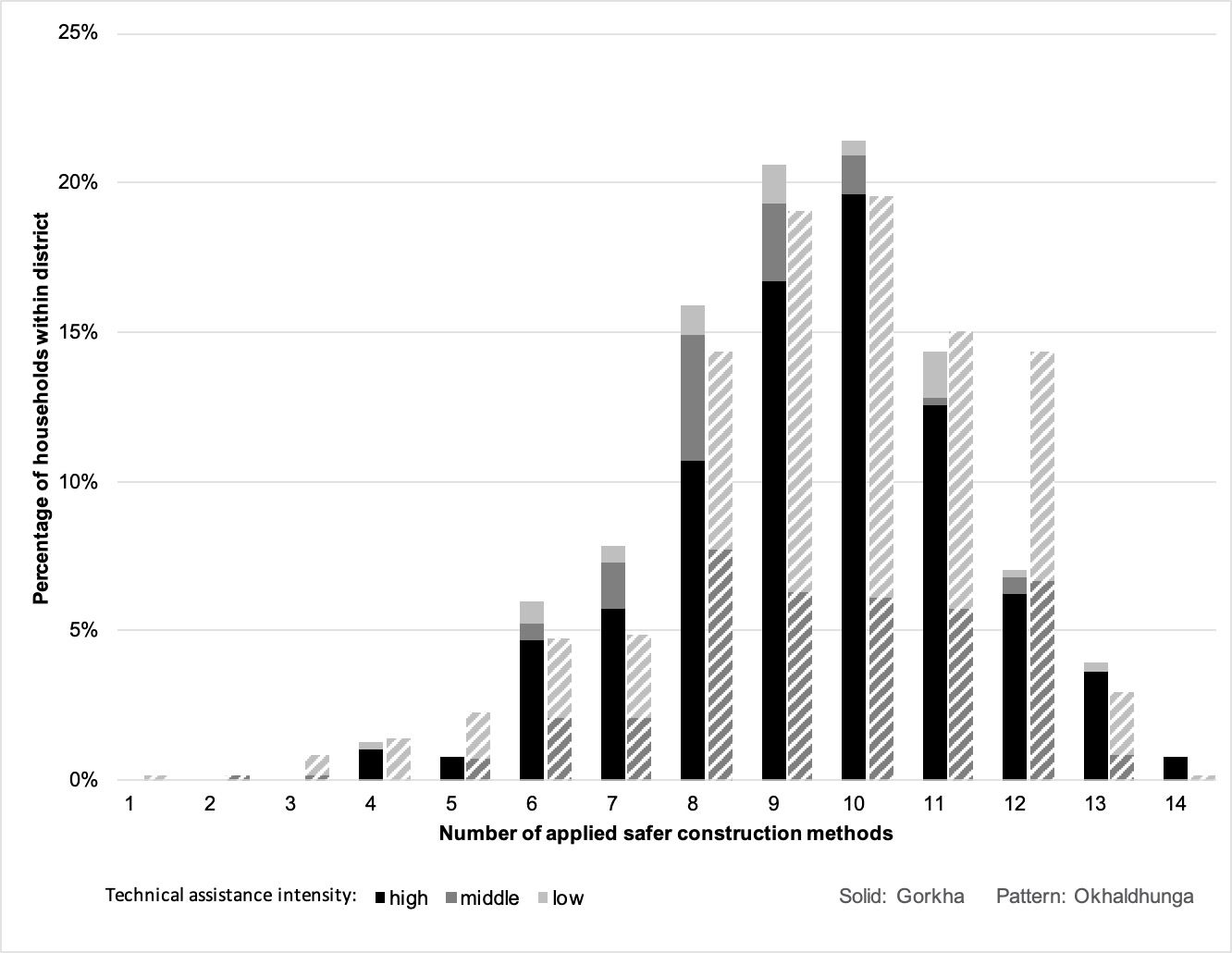Adoption of seismic-resistant techniques in reconstructed housing in the aftermath of Nepal’s 2015 Gorkha earthquake

We all hope people build back a safer house after a disaster so that they are protected in the future. Our study found that technical #humanitarianassistance is not always necessary to enhance the safety of houses. Why is that the case?

Aaron Opdyke and I compared two districts in #Nepal through an extensive structural analysis of post-earthquake housing. Seismic resistance of houses was assessed 3 years after the earthquakes. Findings from 955 houses in 25 communities show high degrees of adoption of earthquake-resistant construction knowledge in all selected communities.
We found only slight variation despite the differing levels of assistance. The least assisted is the patterned one in this image, Okhaldhunga. As you can see, both districts have been rather successful in the reconstruction of seismic resistant houses. This finding points toward the need to more closely examine the communication methods employed and motivations of households to build back safer.

It is not exactly what we expected! We explain and discuss the results, questioning how technical knowledge should be communicated and by whom. #DRR
Read further: https://journals.sagepub.com/doi/full/10.1177/87552930211009530
